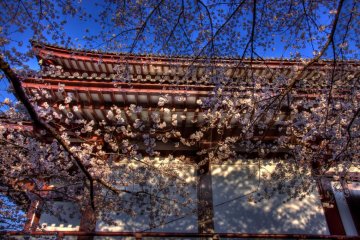
Zojo-ji
Brian Wood-KoiwaZojo-ji was once the family temple of the Tokugawa Shoguns during the Edo period (1603-1868). Today, Tokyo Tower rises majestically above it.

San'en-zan Zōjō-ji is a Jōdo-shū Buddhist temple in Tokyo, Japan. It is the main temple of the Jōdo-shū Chinzei sect of Buddhism in the Kantō region. [Wikipedia]

Zojo-ji was once the family temple of the Tokugawa Shoguns during the Edo period (1603-1868). Today, Tokyo Tower rises majestically above it.

If you think Tokyo's Zojoji Temple is beautiful, you should see it during cherry blossom season! Mixed with the architecture, history, and culture of the temple grounds, it's a must-see sight for anyone planning a trip to Japan.

Zojoji Temple in the spring is bright and colorful, with a mix of tradition and modernity on display. The grounds have a number of statues, including guardian deities for children.
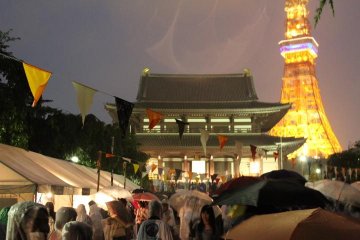
Held on the eve of the summer’s Solstice, the festival was first held in 2002. The event organizers hope that people can turn off their lights and use candles instead from 8pm to 10pm.
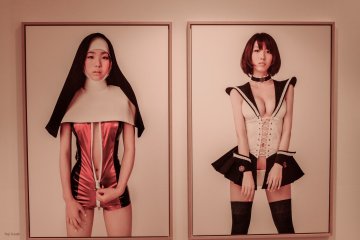
Tokyo hosted one of Asia's leading photography exhibitions called Tokyo Photo 2013. In celebration of its 5th anniversary, Tokyo Photo 2013 was held at Zōjō-ji, one of
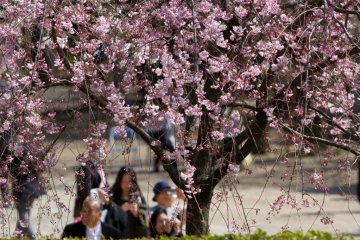
Zojo-ji in Tokyo during sakura season: The scene around the temple with salarymen and office ladies enjoying their bento underneath the blooming trees creates a great atmosphere.
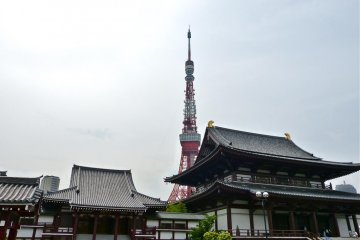
Shiba Zojo-ji (増上寺) is located in the center of Tokyo, next to the Tokyo Tower, and only 500 meters distance from cool, exciting Roppongi.
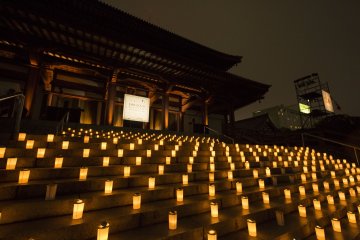
The Candle Night at Zojoji event started back in 2003, and encourages visitors to switch off from electricity and enjoy the beauty of candlelight instead.

To celebrate their 90th anniversary and a triumphant 2024 season, the Yomiuri Giants will host a spectacular drone show at Zojoji Temple in Tokyo on December 26th.
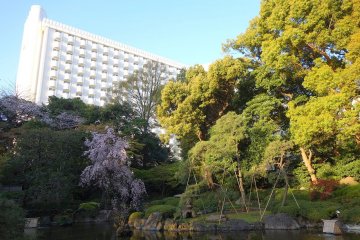
Just minutes from Shinagawa Station, the Grand Prince Hotel New Takanawa is surrounded by lush greenery in the Takanawa area, with rooms offering balcony views of the nearby gardens and the surrounding Tokyo cityscape. This urban resort features convention facilities like the Hiten banquet hall, the international Convention Center Pamir, as well as a wide variety of Japanese, Chinese and Western restaurants.

Oakwood Premier Tokyo comes from a brand of standout luxury hotel & service apartments right at the heart of the Tokyo metropolis. It is located in the business hub of Marunouchi with JR Tokyo Station in close proximity. This will allow guests and travelers to easily access the city's extensive transport network and visit various landmarks such as Imperial Palace, Tsukiji Fish Market, Ginza and Shopping District. Boasting 123 luxurious apartments on the upper floors of a multi-serviced complex, each room offers a magnificent view of the city, not to mention all furnished and a fully-equipped kitchen set which is rarely seen in your everyday service apartment. Without doubt, these spacious tranquil retreats are curated to give you the amenities and services of a luxury hotel and a feeling of home. They are good options for both business executives and leisure travelers from one night of a short-stay to a few weeks/months of mid-to-long-term stay.

ANA Holiday Inn Tokyo Bay (previously Dai-ichi Hotel Tokyo Seafort) is a 132-room hotel that will provide visitors to Japan’s capital city with an attractive, fresh option in the midscale space. ANA Holiday Inn Tokyo Bay will join a strong portfolio of 10 ANA Holiday Inn open and pipeline hotels across Japan, and become part of the brand’s global footprint of 1,234 open hotels and 278 pipeline properties.

If you're a fan of Quentin Tarantino’s Kill Bill, there's one Tokyo restaurant that absolutely deserves a spot on your bucket list. While you may not know it by its real name, chances are you've seen it on screen—it’s the unforgettable setting for the iconic, over-the-top showdown between The Bride and the Crazy 88. Known affectionately by fans as “The Kill Bill Restaurant,” this venue offers more than just cinematic nostalgia—it's a vibrant and unique dining experience in its own right. Located in Tokyo’s upscale Nishi-Azabu district, this classic-style izakaya bar is where fiction meets flavor. Though the fake blood and samurai swords have long been cleaned away, the spirit of the film lives on in the architecture and atmosphere. Stepping inside feels like walking onto the set: a grand, high-ceilinged hall with a central open-plan dining space, surrounded by a mezzanine-level balcony—instantly recognizable to anyone who’s watched the movie. But don’t mistake it for just a movie-themed attraction. The Kill Bill restaurant is a serious culinary destination. It offers a wide variety of traditional Japanese dishes, from sashimi and grilled skewers to noodle dishes and seasonal specialties. The menu also boasts creative fusion items like avocado and camembert tempura, which nods to the restaurant’s global popularity and mindset. And for international travelers with specific dietary needs, the restaurant provides vegan and halal-friendly menus (with at least three days’ notice). What makes this spot truly special is its ability to deliver a top-tier gourmet experience while doubling as a pop culture pilgrimage. You can sip sake where Uma Thurman once sliced through waves of enemies—minus the chaos, of course. Whether you’re a die-hard Tarantino fan, a foodie on the hunt for authentic Japanese flavors, or simply someone looking for a unique night out in Tokyo, this restaurant checks every box. Just one tip: Enjoy the drinks and dishes, but leave the swordplay to the professionals. Note: As you’d expect, Gonpachi is a popular restaurant. Same-day reservations are possible, but ideally you’ll want to reserve your table at least two days ahead of your visit, and even earlier if you’re planning to visit at the weekend.
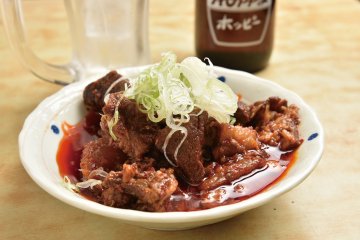
One of the long-established restaurants in the area, it is always packed. But since there are also seats on the second floor, customer turnover is quick. The Spicy Beef Tendon Stew made by stewing high-quality meat from the neighborhood butcher with Korean spices is popular.
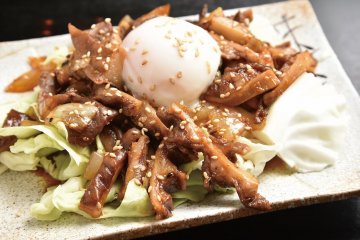
Motsu (offal) is their signature item, and they offer not the common motsu-yaki, but stir-fried motsu with different flavors depending on the type of offal meat. The stir-fried beef Abomasum eaten with a traditional sauce passed down over many years is popular.
![Tokyo One Piece Tower [Closed] Tokyo One Piece Tower [Closed]](https://a0.cdn.japantravel.com/photo/poi-143-207916/360x240!/tokyo-tokyo-one-piece-tower-207916.jpg)
With over ten attractions and shops, this indoor theme park is sure to make fans of the popular Shonen Jump series smile along with Captain Luffy D. Monkey. Opened in 2015, Tokyo One Piece Tower offers games, attractions, restaurants, and shops all related to that infamous Straw Hat Crew of the One Piece universe. Visit Tongari Island (so named for the shape of Tokyo Tower that houses One Piece Tower as tongari means pointed) and play along with the pirate crew in their themed attractions. From slashing through cannonballs with Zoro to gambling at a casino house with Nami, every member of the Straw Hat Crew has their own experience for fans to engage in. Enjoy live shows that change every couple of years. Afterward, be sure to visit the shops for some original merchandise you won't find anywhere else. And dine in style at Sanji's Oresama Restaurant.
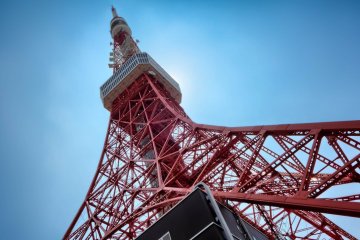
Tokyo Tower (東京タワー, Tōkyō tawā) is the tallest self-supporting steel structure in the world, this orange-red radio tower (modelled on Paris’ Eiffel) defined the skyline of Tokyo for many years, and even though its broadcasting duties have been supplanted by the Tokyo Skytree, it will likely continue to be dear to residents and visitors for years to come. Recently, a Showa-era nostalgia boom has come about in Japan, primarily for the 1950s, 60s and 70s eras, and the Tower was built during those post-wartime years, in Showa 33 (1958). You may have seen it under construction in the popular 2005 film Always Sanchoume no Yuuhi or giving a sense of place to dozens of other films set in the capital. You can also view a history in photos of the Tower on your way down from its observation decks. The Main Observatory at the 145 metre mark is Tokyo Tower’s biggest draw. Offering a 360-degree view of the city, the Observatory features large glass windows and a few small glass panels in the floor, a cafe, gift shop, the Club33 stage for live shows, computer stations to take you through time-lapses and city maps, and markings on the walls to help direct you to major sights. On a very clear day, it’s even possible to see Mount Fuji from here. The Special Observatory is a step up in quality, reflected by the extra admission price. Located at 250 metres above ground, it is a circular deck with a much smaller amount of foot traffic and breathtaking views. Unfortunately, there aren’t as many features on the upper part of the tower as one might hope for the ticket price – especially given that there is often a long lineup for admission. In the building below the tower, however, known as FootTown, there is plenty more to do. On the first floor, where the Observatory elevators are located, you can also find an enormous aquarium, official "Tower Restaurant," a FamilyMart convenience store and souvenir shop. The second floor is a bazaar-like shopping area with plenty of tourist merchandise and gift stands, five restaurants and a food court with fast food. The third floor’s main attractions are the Guinness World Records Museum Tokyo and the Tokyo Tower Wax Museum, both popular among visitors. The Wax Museum has been severely showing its age in recent years, but is still a delight to see. A hologram gallery, cafe and a few other shops can also be found on the third floor. The top floor is mostly occupied by Nippon Square, and also features a small game arcade. The attractions change occasionally, as Tokyo Tower is constantly seeking ways to bring in more visitors. There’s something irreplaceably iconic about visiting Tokyo Tower itself – if you take a visit to Japan and skip the Tower in favour of the view from the Mori Building or one of the other skyscrapers, you may later regret it!

teamLab Borderless: MORI Building DIGITAL ART MUSEUM (hereinafter "teamLab Borderless") is a permanent art museum at Azabudai Hills. This surreal museum is home to numerous artworks that form one borderless world. The installations move out of rooms, communicate with other works, influence, and sometimes intermingle with each other with no boundaries. The museum utilizes lighting, projections, mirrors, and more to craft its one-of-a-kind viewing experiences. Immerse your body and mind in borderless art in this vast, complex, and three-dimensional world. With its reopening, teamLab Borderless will feature never-seen-before installations. So, be sure to check out its exciting new worlds! Not to be confused with teamLab Planets in Toyosu.